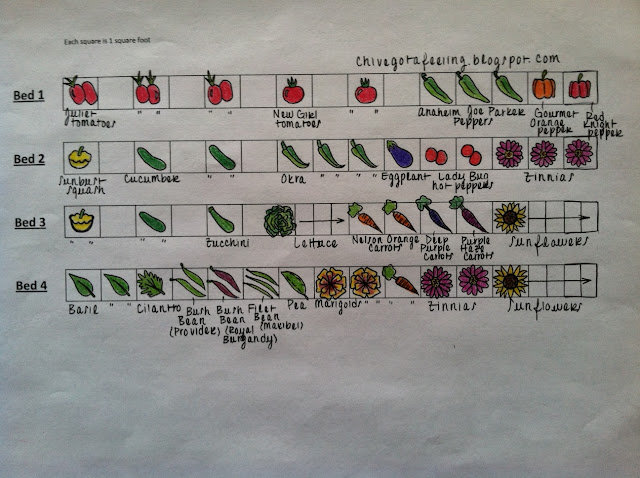This week in the garden was a busy one! Here is a quick overview of what I did:
- Pulled weeds from all four beds; hoed the walkways between the beds
It's amazing how quickly weeds can take root! A few weeds that developed throughout the week already had extremely developed root systems. This week I hoed the walkways between the beds to rid the walkways of weeds as well. What I thought was an ant infestation (orange dirt commonly associated with an ant bed surrounded one of my ladybug pepper plants) turned out to be a parasitic infestation! The leaves of my pepper plants were shrunken and shriveled. :( I had to pull out both transplants and toss them, they were unsalvageable! Luckily since it's still fairly early in the game I transplanted two new, healthy pepper plants in the open spaces. :)
- Seeded the remaining two beds of my garden. All beds are seeded now!
In order to jumpstart growth, I added fertilizer to my beds. To give the fertilizer a place to sit in the soil, I dug shallow circles around transplants and shallow trenches on each side of seeds with my finger.
 |
| shallow trenches dug on either side of buried seeds |
Only one small cup of fertilizer was needed to fertilize the entire garden. Fertilizer was sprinkled into the shallow crevices and then covered with soil.
- Sprayed organic pesticides on plants
This week we sprayed a specific pesticide intended to only kill caterpillars onto our plants using a spray bottle. It was important to essentially cover the plants with the pesticide, as caterpillars will only be killed by the pesticide if they ingest it.
In lecture this week we learned about the genetic modification of plants. I was surprised to learn that I probably eat a GMO (Genetically Modified Organism) on a daily basis. Contrary to common public misconception, GMOs have never caused negative side effects in humans. GMOs enable farmers to produce higher crop yields each season and in general produce larger, fuller, heartier vegetables!







